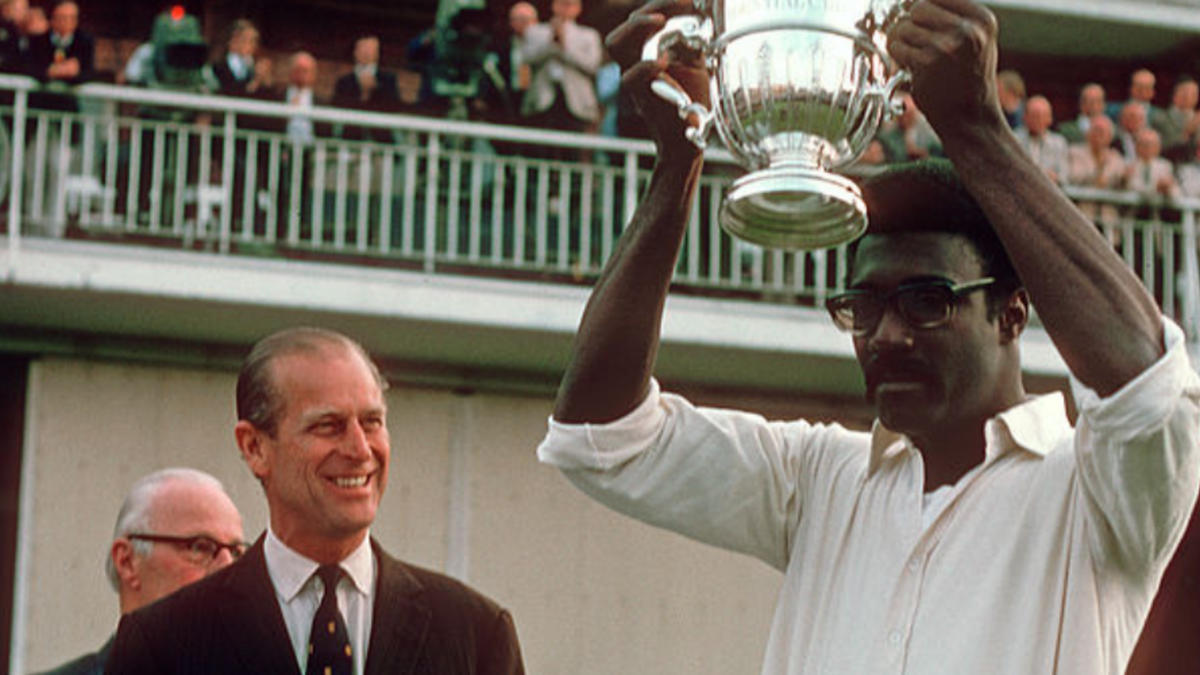
Prince Philip, the Duke of Edinburgh, served two terms as MCC president: in 1949-50 and 1974-75. In the final year of his second term, he wrote about the joys of watching cricket and the sport’s evolution in that year’s Wisden Cricketers’ Almanack.
Watching cricket without Wisden is almost as unthinkable as batting without pads. There is a widely held and quite erroneous belief that cricket is just another game. It is true that games are played and cricket is played, but there is very much more to it than that. It can be as brutal as rugby and as delicate as chess; it requires all the grace and fitness of athletics, but at the same time it requires the psychological insight and judgement of master politicians.
Any similarity between a Test team on tour and a bunch of cricketers having a jolly time only exists in the romantic imaginations. Not that I have ever had first hand experience of a touring team, but I have played cricket and I have been to most of the cricketing countries of the world. Occasionally, there is a match which might be described as a game, but otherwise the whole thing bears a closer resemblance to Wellington’s campaign in the Peninsular War than to so many ‘flannelled fools’ amusing themselves in the sun. Then there are the Statistics, courtesy of Wisden, which add their particular dimension.
I enjoy everything about cricket. I suppose I must have played the game off and on from the age of eight until about forty eight, and I am sure I shall go on watching it as long as I can. Exactly how I came to be President of the MCC in 1949 escapes me at the moment, but I do not mind admitting that I remember how inordinately proud I was. I suppose I must have been one of the very few village, with a dash of club, cricketers to step into this legendary position. Now, 25 years later, I am, if anything, prouder still to be so closely associated once again with this most English of games and to preside over the destinies of that most English of institutions, the Marylebone Cricket Club at Lord’s.
A lot has changed, of course, although the game itself is much the same. 1962 saw the end of the distinction between Gentlemen and Players, and it was during my term of office that twenty six distinguished retired Players were invited to become Hon. Members of the MCC. In those days it was assumed that sports and games would be self supporting and commercial sponsorship was hardly known. There was a bit of League cricket, more generally appreciated in the north than in the south, but I do not think anyone ever dreamed that one-day league and knock out games would ever develop the way they have. However, even then it was appreciated that the first-class game would become almost entirely professional and therefore it would be necessary to have rather more cricket to keep the players fully occupied and to cover costs.
For the moment, cricket looks pretty healthy. The recent Test series in Australia has stirred up some splendid arguments and these are just as much a part of the game as everything else. I shall only start to worry if cricket ever ceases to be a topic of heated discussion over drinks in pubs and clubs.
At one time it looked as if it might become a purely spectator sport, but there are signs that people are rediscovering the pleasures of actually playing the game and, who knows, perhaps even schools and universities may notice that they are missing something.
To attempt to see into the future at this time of financial and social confusion would be folly, but there is no harm in making a few suggestions. It seems to me unwise to place too great a reliance on a growing or even on a steady contribution of commercial sponsorship to the first-class game. First-class cricket, including international competition, is essential to the game as a whole but it would not be in the best interests of cricket if the first-class game became too widely separated from club and other levels of the game. There are hopeful signs that the administrators are aware of the need to improve the structure.
If the game is to flourish in the future, there are two absolutely vital requirements. In the first place, clubs must be allowed to be viable organisations. Secondly, the younger generations need the encouragement of sympathetic teachers and the expert instruction of competent coaches.
In the meantime, we have the first World Cup type of competition to look forward to this summer, as well as an intriguing series against the Australians.
For the active players in schools, villages and clubs, the fixture lists have been more or less completed; the pavilions dusted out; hats, pads, flannels and other essential equipment pulled out from behind the golf clubs and walking sticks; and the pitches are being prepared for another and, I hope, successful attempt to improve the statistics of last year.








